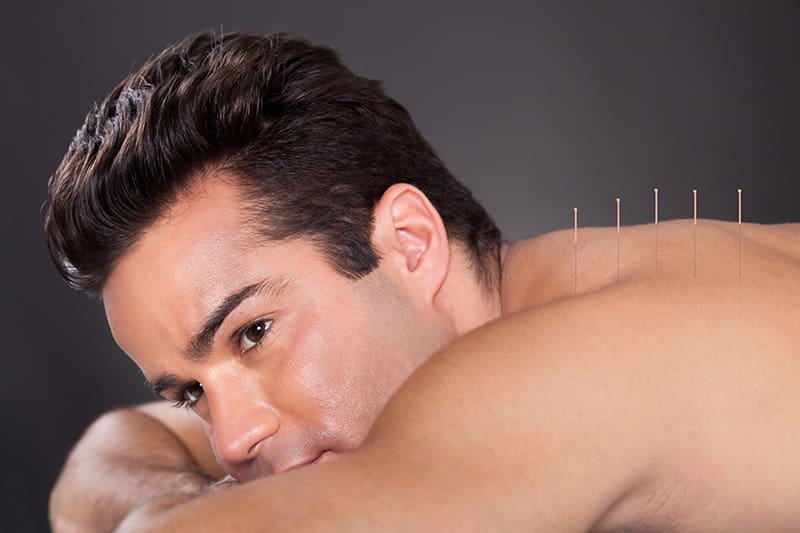My Blog
It Doesn’t Hurt

Acupuncture … It Doesn’t Really Hurt
By Jill Ellen Smith L.Ac., M.Ac.
For the Howard County Women’s Journal – September 2006
No, it doesn’t hurt. The American concept of ‘needle’ conjures up fears of that hypodermic injection we all have come to know and avoid. Medical hypodermic needles are stiff, hollow and thick for forcing liquid into a person’s flesh. This is painful! Acupuncture needles are fine and flexible — no bigger that the thickness of a cat’s whisker. I tell prospective patients that “on a scale of 1-10 of pain” if a hypodermic injection is a 10, then the acupuncture needle will register as a 1. When the needle makes contact with the Qi (the energy) most patients experience a slight tingling sensation or a pleasant pressure-like ache at the site. But, we are jumping ahead of ourselves. Most Americans are still much uninformed about acupuncture.
Acupuncture is based on an energetic model that encourages your body’s natural healing abilities. It produces results by allowing your body to re-establish its balance and promotes the continuous flow of vital life energy, called Qi (pronounced chee). Over the past 5000 years Chinese Medicine, and particularly acupuncture, has evolved into a complete medical system that can diagnose, treat, and prevent illness. It is a safe, effective and relatively painless way to treat a variety of conditions.
Researchers using MRI technology found that acupuncture decreased blood flow to specific areas of the brain. According to Harvard Medical School radiologist Bruce Rosen, “when there’s less blood, the brain isn’t working as hard. In effect, acupuncture is quieting down key regions of the brain.” The specific brain area affected in the study was involved in mood, pain and cravings. This could help explain why some studies have found acupuncture helpful in treating depression, eating problems, addictions and pain. Research also suggests that the controlled reduced blood flow could lead to dopamine changes that trigger a ‘cascade’ effect, releasing endorphins, the brain’s natural pain-relieving and comforting chemicals.
According to a classical Chinese medical text, “To live is to have Qi in every part of your body. To die is to be a body without Qi. For health to be maintained, there must be a balance of Qi, neither too much nor too little.”
But, what is Qi? Qi is the vital energy in all living things, from the tallest tree to the smallest cell. Qi keeps life ‘on the move’. An acupuncturist’s primary aim is to keep your Qi flowing smoothly and evenly. Qi flows as an invisible current throughout the body. It provides the power to accomplish everyday activities and is necessary for growth, development, movement, reproduction, maintenance of body temperature, protection against illness and disease, and overall regulation of the entire body.
The Qi travels through invisible channels called meridians. Meridians supply the entire body with Qi like a flowing river carries water, which nourishes and sustains life on our planet. It is the acupuncturist’s skill in diagnosing that determines which meridian to needle. That is why a headache may not be treated directly with needles in the head region; you may be needled in the ankle or foot region instead.
There are 14 primary meridians that an acupuncturist evaluates the functioning of and treats in relation to your symptoms. The diagnostic process involves identifying which meridians is most needing attention. Over a course of acupuncture treatment, more than likely, all 14 of these meridians will be treated.
Illness or symptoms of any kind show up when the Qi is not flowing smoothly through your meridians. An obstruction of Qi is like a dam. When Qi becomes ‘backed up’ in one part of your body, it restricts the flow in other areas. This obstruction and decrease flow can lead to pain, illness, and disease. Physical or emotional strain, trauma, stress, lack of exercise, overexertion, seasonal changes, poor diet, accidents, excessive activity and overall weak constitution can all lead to blockages of Qi.
Under normal circumstances, the body can bounce back (right itself), and return to balance. But if stressors are prolonged or the blockage is excessive or prolonged or the body is in a weakened state, illness, pain or disease can set in.
The safety of acupuncture often comes up as a concern with my prospective patients. Be assured that acupuncture is extremely safe. It is a ‘drug free’ therapy producing no side effects except for feelings of relaxation and being grounded. There is no danger of infection from acupuncture needles because they are pre-packaged individually in sterile packages; used once; and disposed of after each use.
The length of a treatment averages 60 minutes. Some people experience immediate relief after the first treatment, while others take weeks or months to see significant lasting results. Chronic conditions usually take longer to resolve than acute problems. So plan a minimum of one month to notice significant shifts in your symptoms. A patient’s speed and degree of responsiveness also has a lot to do with lifestyle shifts you’ve made to support your body’s attempts to rebalance itself.
Treatment frequency also depends on a variety of factors such as: severity and duration of your problem, your constitution, and the overall quality and quantity of your Qi. I have patients who come one to two times per week for several weeks and then shift to bi-weekly; while others come monthly or even ‘seasonally’ for their ‘tune up’. A number of my patients come strictly for basic health maintenance and preventive medicine.
People who have undergone an adequate course of acupuncture treatment report a decrease or resolution of their symptoms; an increased sense of well-being, feeling stronger and more at ease, less reactivity to stressors in their lives, improvement in relationships with people, and an overall higher level of functioning and health.
I invite readers to email me for questions related to acupuncture and your own health issues.
